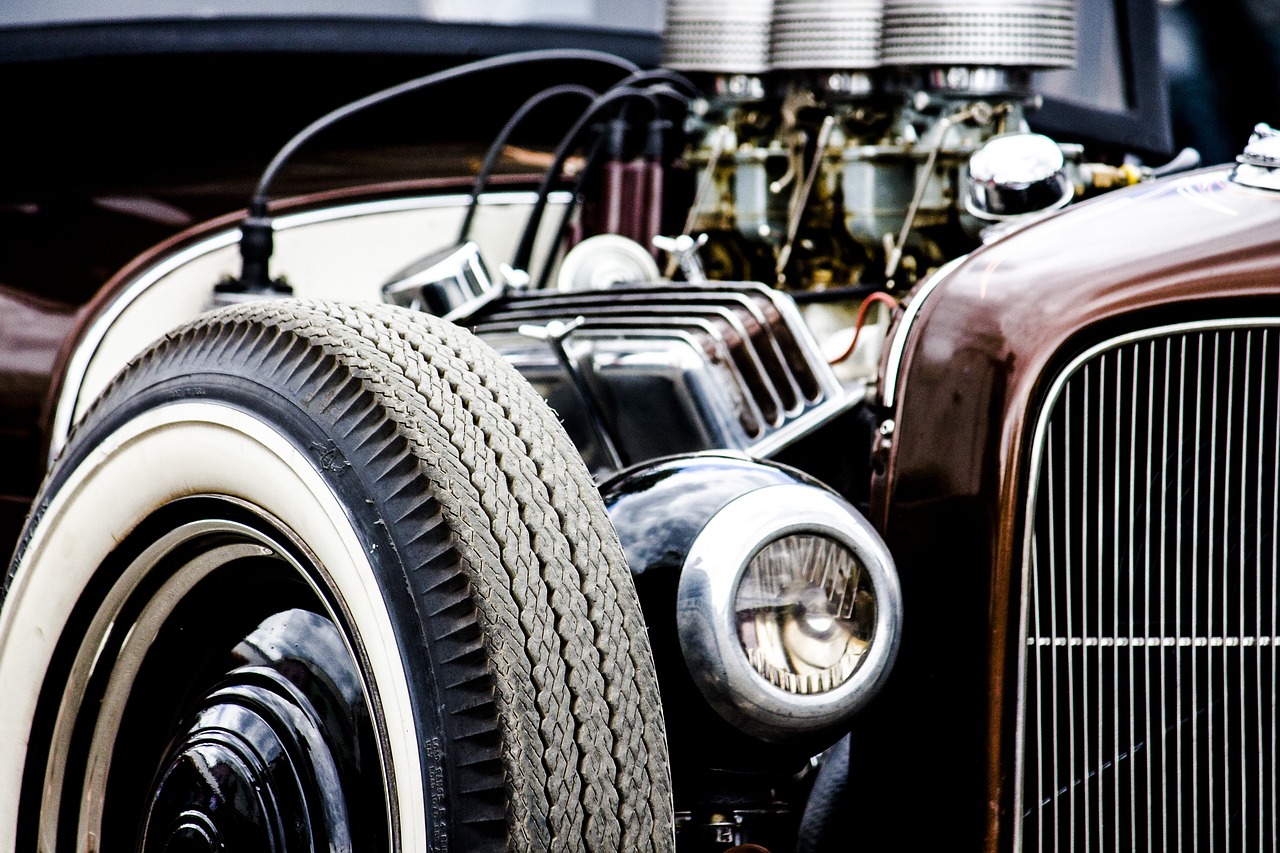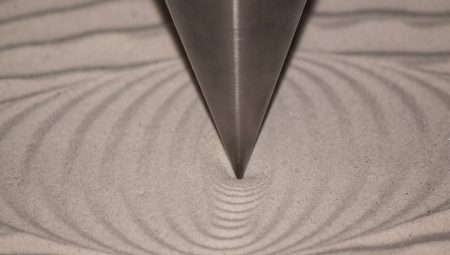Engine mounts play a crucial role in vehicle performance, acting as the silent guardians that connect your engine to the vehicle frame. Imagine driving a car where every bump and vibration is felt directly through the steering wheel—not pleasant, right? These mounts absorb vibrations and minimize noise, ensuring a smooth and enjoyable ride. Without them, the engine’s relentless vibrations could wreak havoc on your vehicle’s structure, leading to increased wear and tear on various components.
Understanding the function of engine mounts is essential for any vehicle owner. They not only support the engine’s weight but also help maintain its alignment, which is vital for optimal performance. If these mounts fail, you might experience symptoms like excessive vibrations, unusual noises, or even misalignment, all of which can compromise your driving experience and safety.
In short, engine mounts are the unsung heroes of your vehicle’s dynamics. Keeping them in check is not just about comfort; it’s about ensuring your car runs smoothly and safely. So, the next time you think about vehicle maintenance, remember to give those mounts the attention they deserve!
The Function of Engine Mounts
Engine mounts are the unsung heroes of your vehicle, quietly doing their job while you enjoy the ride. They act as a crucial link between the engine and the vehicle frame, ensuring that everything operates smoothly. Think of them as the shock absorbers for your engine, absorbing vibrations and minimizing noise. Without these mounts, your engine would be a shaky mess, rattling around and causing all sorts of chaos under the hood.
These mounts are designed to handle a variety of stresses, including:
- Vibration Absorption: They dampen the vibrations produced by the engine, making your ride more comfortable.
- Noise Reduction: By minimizing engine noise, they create a quieter cabin environment.
- Engine Stability: They keep the engine securely in place, preventing misalignment and potential damage.
In essence, engine mounts are vital for maintaining the overall performance and safety of your vehicle. Regularly checking their condition can save you from a bumpy ride and costly repairs down the line. So, next time you’re cruising down the road, remember to appreciate the hard work these mounts do behind the scenes!
Types of Engine Mounts
When it comes to engine mounts, understanding the different types is essential for optimizing vehicle performance. Engine mounts can be broadly categorized into three main types: rubber, hydraulic, and solid mounts. Each type serves a unique purpose and offers distinct benefits tailored to various driving needs.
Rubber engine mounts are the most commonly used type in everyday vehicles. They provide a balance of flexibility and durability, effectively absorbing vibrations while supporting the engine’s weight. However, as they age, they may become susceptible to wear and tear, which can lead to performance issues.
Hydraulic engine mounts, on the other hand, utilize fluid to absorb vibrations, making them ideal for luxury vehicles where comfort is paramount. They offer superior damping compared to rubber mounts, resulting in a smoother ride. These mounts can adjust to changing conditions, enhancing overall performance.
Lastly, solid engine mounts are designed for high-performance applications. They provide maximum stability and are often used in racing or performance vehicles. While they eliminate most vibrations, they can transfer more noise to the cabin, which may not be suitable for everyday driving.
| Type | Advantages | Disadvantages |
|---|---|---|
| Rubber | Cost-effective, good noise reduction | Can degrade over time, leading to vibrations |
| Hydraulic | Superior vibration damping, ideal for luxury vehicles | More expensive, can be complex to replace |
| Solid | Maximum stability, preferred for performance | Increased noise, less comfort |
In summary, choosing the right engine mount is crucial for the vehicle’s performance and comfort. Each type has its unique strengths and weaknesses, making it important to consider your specific driving needs when selecting engine mounts.
Rubber Engine Mounts
Rubber engine mounts are the unsung heroes of your vehicle’s performance. They play a critical role in cushioning vibrations while ensuring the engine remains securely in place. Imagine driving over a bumpy road without these mounts—your engine would rattle like a maraca! Their design incorporates a blend of flexibility and durability, making them the most common choice for everyday vehicles.
These mounts are crafted from high-quality rubber, which allows them to absorb shocks effectively. They can handle the engine’s weight while also accommodating its movements during acceleration and deceleration. However, they aren’t without their drawbacks. Over time, exposure to heat and stress can cause rubber mounts to degrade, leading to increased vibrations and a less stable engine. Regular inspections are essential to catch any signs of wear before they escalate.
Here’s a quick overview of the advantages and disadvantages of rubber engine mounts:
| Advantages | Disadvantages |
|---|---|
| Cost-effective and widely available | Can degrade over time due to heat |
| Excellent noise reduction | Increased vibrations if worn |
| Allows for some engine movement | Potential for engine misalignment |
In summary, rubber engine mounts are essential for a smooth and comfortable ride. Keeping an eye on their condition can save you from unexpected repairs and ensure your engine runs like a dream.
Advantages of Rubber Mounts
Rubber engine mounts are a popular choice among vehicle manufacturers and owners alike, and for good reason. These mounts offer a remarkable balance of flexibility and durability, making them ideal for everyday driving. One of the most significant advantages is their ability to effectively dampen vibrations, which translates to a smoother ride for passengers. Imagine driving on a bumpy road; rubber mounts act like a cushion, absorbing shocks and preventing the engine’s harsh vibrations from reaching the cabin.
Moreover, rubber mounts are cost-effective, which makes them an attractive option for budget-conscious vehicle owners. They provide excellent noise reduction, allowing for a quieter driving experience. This is particularly important for those who spend long hours on the road, as a peaceful environment can significantly enhance comfort and reduce fatigue.
Another noteworthy feature is their design, which allows for some movement. This flexibility accommodates engine vibrations without compromising stability, ensuring that the engine remains securely in place while still being able to adapt to various driving conditions. In summary, the advantages of rubber engine mounts include:
- Cost-effectiveness: Affordable and widely available.
- Noise reduction: Minimizes cabin noise for a quieter ride.
- Vibration dampening: Provides a smoother driving experience.
- Flexibility: Accommodates engine movement without sacrificing stability.
In essence, choosing rubber engine mounts can lead to a more enjoyable and safer driving experience, making them a smart investment for any vehicle owner.
Disadvantages of Rubber Mounts
While rubber engine mounts are popular due to their cost-effectiveness and noise-dampening capabilities, they come with a set of disadvantages that vehicle owners should be aware of. One major drawback is their tendency to degrade over time. Factors such as heat, stress, and exposure to various environmental elements can lead to a breakdown of the rubber material. This degradation can result in:
- Increased vibrations: As the mounts wear out, they become less effective at absorbing engine vibrations, leading to a rougher ride.
- Potential misalignment: Worn mounts may fail to hold the engine securely in place, causing misalignment that can impact overall vehicle performance.
- Noise issues: With reduced effectiveness in dampening vibrations, drivers may experience more noise from the engine compartment, which can be quite bothersome.
Regular inspections of rubber mounts are essential to catch these issues early. Ignoring the signs of wear can lead to more serious problems, including damage to other components of the vehicle, which can be both costly and time-consuming to repair.
Hydraulic Engine Mounts
Hydraulic engine mounts are a game changer in the world of automotive engineering. Unlike traditional rubber mounts, these innovative components utilize a fluid-filled design that provides exceptional vibration dampening. Imagine driving on a smooth road, where every bump and jolt is effortlessly absorbed, giving you a luxurious experience. This is precisely what hydraulic mounts offer, making them a popular choice for luxury vehicles and high-performance cars.
One of the standout features of hydraulic mounts is their ability to adapt to varying driving conditions. When you accelerate or hit a rough patch, the fluid within the mount shifts, allowing for optimal support and stability. This dynamic response not only enhances comfort but also improves overall vehicle handling. However, it’s essential to note that while hydraulic mounts provide superior performance, they can be more expensive than their rubber counterparts.
In terms of maintenance, hydraulic engine mounts require regular checks to ensure they are functioning correctly. Signs of wear may include fluid leaks or a noticeable increase in vibrations. Addressing these issues promptly can prevent further damage to the engine and surrounding components. So, if you’re looking for a smoother ride and enhanced vehicle performance, hydraulic engine mounts might just be the upgrade you need!
Signs of Worn Engine Mounts
Recognizing the is crucial for maintaining vehicle performance and safety. These components play a vital role in stabilizing your engine, and when they start to fail, it can lead to a cascade of issues that affect your driving experience. So, how can you tell if your engine mounts are on their last legs? Look out for these telltale signs:
- Excessive Vibrations: If you notice a significant increase in vibrations while driving, it could be a warning sign. Your engine mounts are designed to absorb vibrations, and when they wear out, those vibrations can transfer directly to the cabin.
- Unusual Noises: Listen for clunking or banging sounds, especially when accelerating or shifting gears. These noises may indicate that the engine is moving more than it should, thanks to failing mounts.
- Visual Damage: A quick visual inspection can reveal cracks, tears, or separation in the mounts. If you see any physical damage, it’s time to consider replacement.
Ignoring these signs can lead to more serious problems, such as engine misalignment or even damage to other components. Regular checks can save you from costly repairs and ensure a smooth ride. So, next time you’re under the hood, give those engine mounts a good look!
Vibration and Noise Issues
When engine mounts start to wear out, one of the first signs you’ll notice is an increase in vibrations and noise. Imagine driving down a smooth road, and suddenly, your vehicle begins to shake like a leaf in the wind. This unsettling sensation can make your ride feel less stable and more uncomfortable. The vibrations often stem from the engine’s movement, which, when not properly cushioned by healthy mounts, can transmit directly to the chassis.
Additionally, you might hear unusual sounds that were once absent. These can range from a dull thud to a more pronounced clunking noise, especially when accelerating or decelerating. Such noises can be alarming and are usually indicative of mount misalignment or degradation. If left unchecked, these symptoms can lead to more severe issues, affecting not only your comfort but also your vehicle’s overall performance.
To help you better understand the impact of worn engine mounts, consider the following:
- Increased Cabin Noise: A noticeable rise in sound levels within the cabin can be a direct result of failing mounts.
- Shaking During Idling: If your car shakes while idling, it’s a clear sign that the engine isn’t being properly supported.
- Difficulty in Steering: Excessive vibrations can even affect steering responsiveness, making it feel less controlled.
In summary, paying attention to vibrations and noise issues is crucial for maintaining a safe and enjoyable driving experience. Don’t ignore these signs, as they can lead to more significant problems down the road.
Visual Inspection Techniques
Performing a visual inspection of engine mounts is like being a detective for your vehicle’s health. It’s essential to look closely for any signs of wear and tear that could indicate a problem. Start by checking the mounts for cracks or tears. These visible signs can often be the first clue that your engine mounts are on their way out. Additionally, look for any separation between the mount and the engine or frame, as this could lead to increased vibrations and noise during your drive.
To make your inspection more thorough, consider using a flashlight to illuminate hard-to-see areas. Sometimes, what appears to be a minor issue can hide deeper problems. If you notice any of the following during your inspection, it’s time to take action:
- Cracks or fractures in the rubber or material of the mount
- Excessive wear around the edges
- Fluid leaks in hydraulic mounts
By keeping an eye on these elements, you can catch potential issues before they escalate, ensuring your vehicle remains safe and performs optimally. Remember, a small investment of time in regular checks can save you from costly repairs down the road!
The Importance of Regular Maintenance
Regular maintenance of engine mounts is not just a suggestion; it’s a necessity for anyone who values their vehicle’s performance and longevity. Think of engine mounts as the unsung heroes of your car—they quietly absorb vibrations and keep your engine stable, but when they wear out, the consequences can be dire. Ignoring these crucial components can lead to a cascade of problems, including increased vibrations, noise issues, and even potential engine damage.
It’s essential to incorporate engine mount inspections into your routine vehicle maintenance schedule. Mechanics can easily assess the condition of these mounts and recommend replacements if necessary. Here are a few benefits of regular checks:
- Enhanced Safety: Regular inspections help prevent unexpected failures that could compromise your safety on the road.
- Cost Savings: Early detection of wear can save you from expensive repairs down the line.
- Improved Comfort: Well-maintained engine mounts provide a smoother driving experience by minimizing vibrations and noise.
In the long run, paying attention to your engine mounts will not only enhance your vehicle’s performance but also ensure a more enjoyable driving experience. Don’t wait until it’s too late—make engine mount maintenance a priority!
Scheduled Maintenance Checks
When it comes to keeping your vehicle in top shape, are your best friend. Think of them as routine check-ups for your car, ensuring that everything runs smoothly and efficiently. These inspections should be part of your regular vehicle maintenance schedule, allowing mechanics to assess the condition of engine mounts and other critical components.
During these checks, professionals can identify potential issues before they escalate into serious problems. For instance, they might look for signs of wear and tear, such as:
- Cracks or tears in the engine mounts
- Increased vibrations during operation
- Unusual noises that weren’t there before
By incorporating engine mount inspections into your routine, you not only enhance your vehicle’s performance but also prolong its lifespan. Remember, a little attention goes a long way. Ignoring these checks can lead to costly repairs and a bumpy ride, so make sure to prioritize them for a smoother, safer driving experience!
Cost Implications of Ignoring Issues
Ignoring the signs of worn engine mounts can lead to a cascade of costly problems. Think of your engine mounts as the unsung heroes of your vehicle; they absorb vibrations and keep everything in sync. When they start to fail, the consequences can be more than just a bumpy ride. For instance, if you notice excessive vibrations, you might be tempted to overlook them, but doing so can lead to:
- Increased Repair Costs: A small issue can quickly escalate into major repairs, such as engine misalignment or damage to surrounding components.
- Decreased Vehicle Value: A vehicle with known issues often has a lower resale value, making it harder to sell when the time comes.
- Safety Risks: Ignoring vibrations can compromise your safety, as they may affect handling and control.
In short, neglecting engine mount maintenance is like ignoring a small leak in your roof; it might seem minor at first, but it can lead to significant damage down the line. Regular inspections and timely replacements are essential to avoid these pitfalls and keep your vehicle running smoothly.
Conclusion: Prioritizing Engine Mount Health
Understanding the vital role of engine mounts is essential for any vehicle owner. These components not only connect the engine to the frame but also absorb vibrations, ensuring a smooth ride. Ignoring their condition can lead to significant issues, including engine misalignment and increased wear on other parts. Regular inspections are crucial. Here’s why:
- Enhanced Performance: Well-maintained engine mounts improve overall vehicle performance.
- Smoother Driving Experience: They minimize vibrations, making your ride more comfortable.
- Cost Savings: Addressing issues early can prevent costly repairs down the line.
Incorporating engine mount checks into your routine maintenance schedule can save you from unexpected surprises. Remember, a little attention can go a long way in keeping your vehicle running smoothly!
Frequently Asked Questions
- What are engine mounts and why are they important?
Engine mounts are the components that connect your engine to the vehicle frame. They play a crucial role in absorbing vibrations and minimizing noise, which helps maintain vehicle stability and enhances the overall driving experience.
- How can I tell if my engine mounts are worn?
Look for signs like increased vibrations, unusual noises, or misalignment. If your ride feels rougher than usual, it might be time to check those mounts!
- What types of engine mounts are available?
There are several types, including rubber, hydraulic, and solid mounts. Each type has its own benefits, tailored to different vehicle needs and performance requirements.
- How often should I inspect my engine mounts?
Regular inspections are key! Incorporate engine mount checks during routine maintenance to catch any issues before they escalate.
- What happens if I ignore worn engine mounts?
Ignoring worn mounts can lead to serious problems like engine misalignment and costly repairs. It’s better to address issues early to save time and money!





